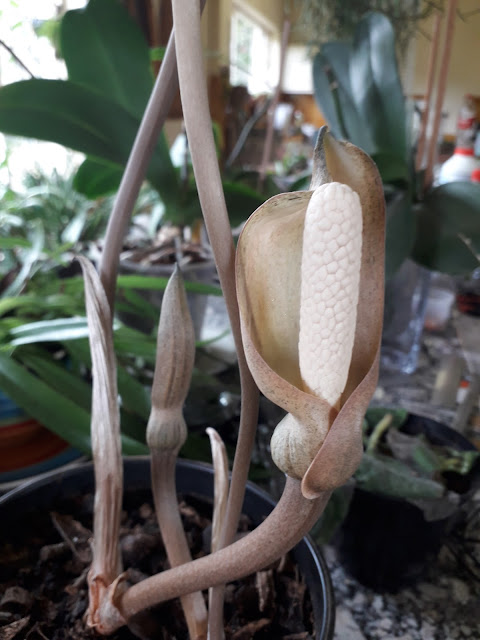The Gaboon Adder Bitis gabonica is a large, colourful and highly venomous snake that with a measure of good luck can be seen in the eMalangeni Peat Swamp Forest in the southern portion of the Kosi Bay System.
The Gaboon Adder Bitis gabonica
Although the Gaboon Adder has a wide distribution throughout the tropical rainforests of Africa, in South Africa they are confined to the hot and humid coastal forests that stretch south from the Mozambique border to the Mapelane Nature Reserve which is the southern most reserve within the iSimangaliso Wetland Park just South of lake St. Lucia then further south to Mtunzini being their southern limit.
The Gaboon adder is the largest of the adders in Africa, weighing up to 20 kilograms and reaching lengths of up to 1.8 meters, with a head up to 15 cm across at the widest point. In South Africa they are a little smaller averaging from .90 to 1.20 meters in length. The fangs which are the longest of any venomous snake may reach a length of 55 mm. Unlike most snakes the Gaboon Adder gives birth in late summer to up to 60 live young.
The colouration is a striking combination of light and dark brown, pink and purple arranged in diamonds and stripes along its back. Light and dark lines radiate from around its small eyes. The broad head mimics a fallen leaf, right down to the central vein, this striking pattern is excellent camouflage in the snake's native habitat, helping it blend into the leaf litter on the forest floor.
Gaboon Adders with are primarily nocturnal have a reputation for being slow-moving and placid, locomotion is mostly rectilinear, in a sluggish walking motion of the ventral scales.
Gaboon Adders are passive ambush hunters, waiting often for considerable periods of time, often in puddles of water, concealed to strike at whatever variety of birds, mammals, and amphibians such as doves, guineafowl, francolins, many different species of rodents, including field mice and rats, as well as hares, rabbits, frogs and toads, even prey items, such as monkeys, that pass within range. It has been reported that the occasional kid goat belonging to local farmers has been caught and eaten by the Gaboon adder at eMalangeni. Unlike most venomous snakes that strike and release the Gaboon adder holds onto its prey until its dies.
Gaboon adders have a placid nature and very rarely bite humans, most bites that do occur happen when the snake is stepped on before it has an opportunity to get away. If harassed, it will raise the upper part of its body and they may hiss loudly as a warning, doing so in a deep and steady rhythm, slightly flattening the head at the expiration of each breath. Despite this, they are unlikely to strike unless severely provoked, however, they are one of the fastest-striking snakes in the world, so care should be taken in regards to provoking them.
A bite from a Gaboon adder is extremely rare, due to their unaggressive nature, their sluggishness and unwillingness to move even when approached. Bites most often occur due to persons accidentally stepping on a Gaboon adder, but even then in some cases this does not guarantee a bite. When a bite does occur, though, it should always be considered a serious medical emergency. Polyvalent anti venom is effective in the treatment of a bite from the Gaboon adder.
Please pay a visit to the African Snake Bite Institute for more information and lots more photos























